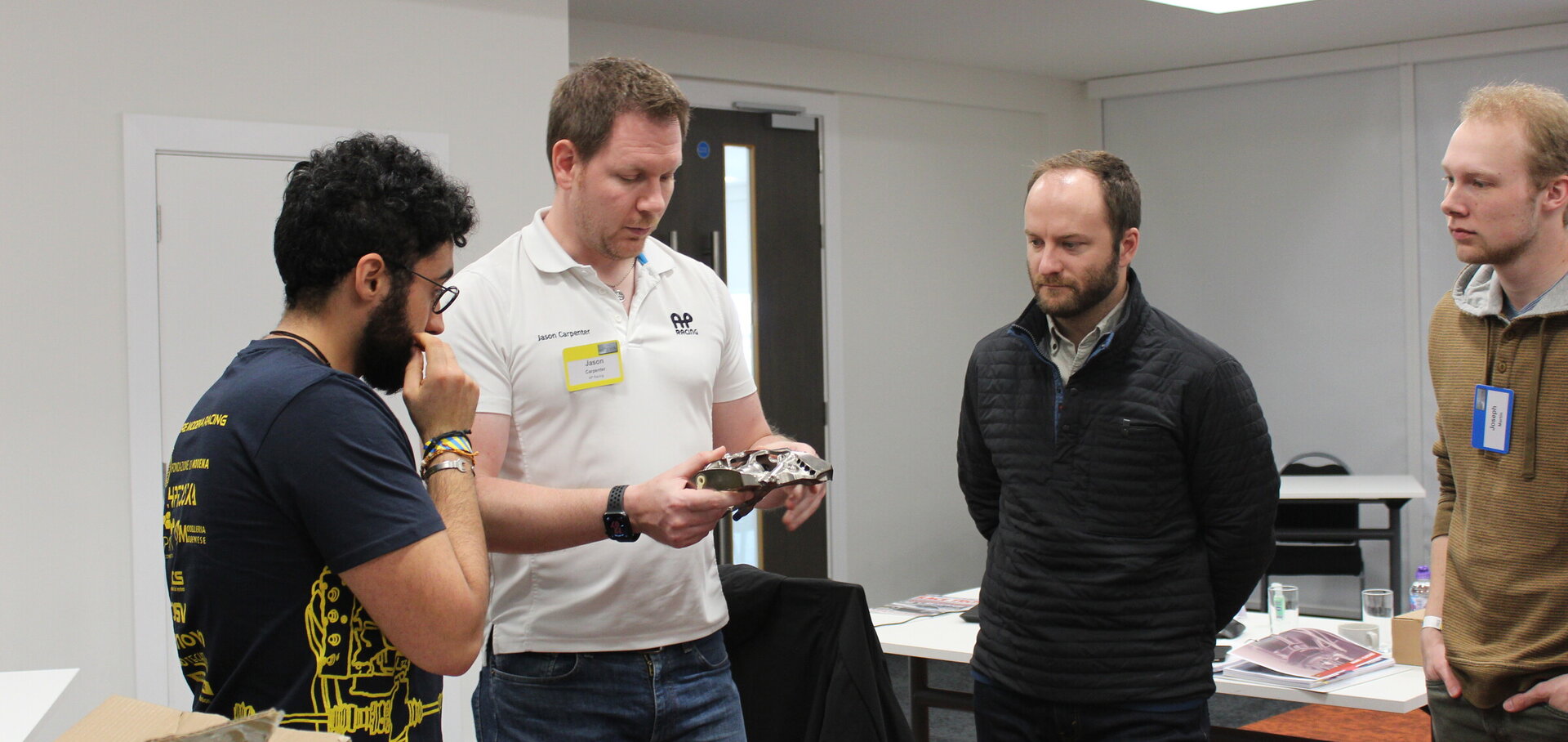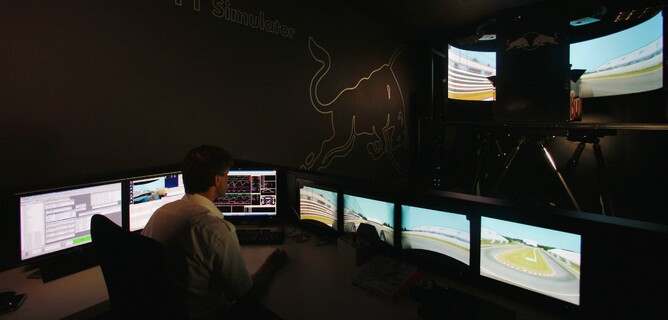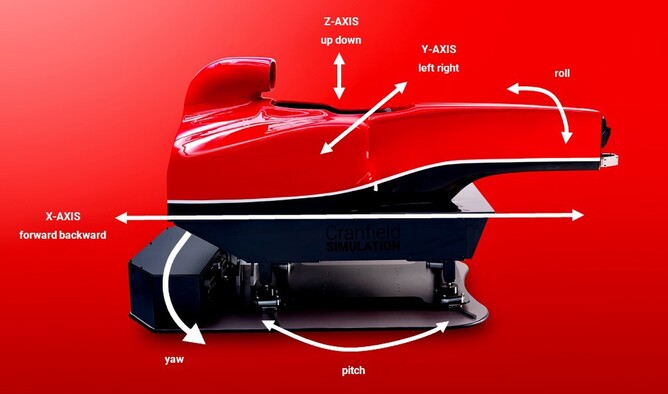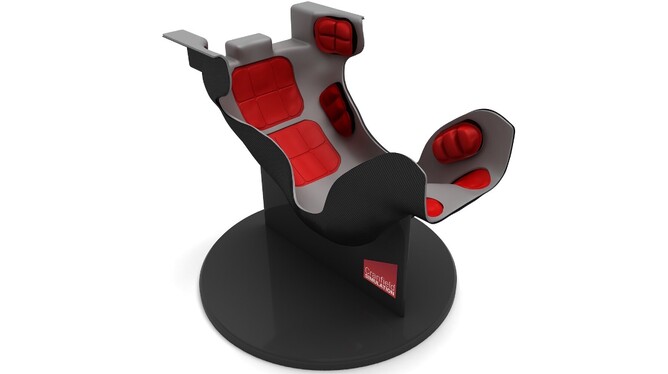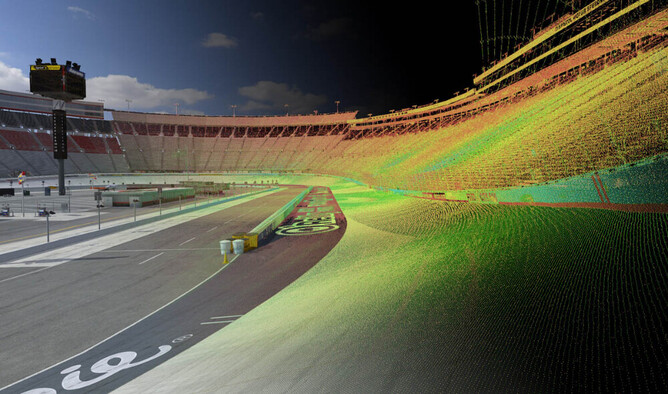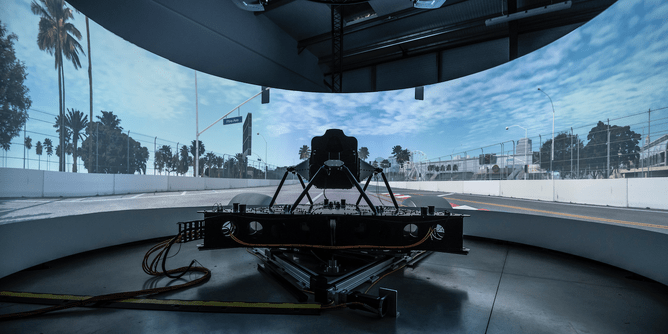Driver in the loop simulators have become much more than driver training tools. Each Formula 1 team now has its own designated simulator driver who can complete up to 450 laps or 8 race distances before each race. During a race weekend, the simulator runs alongside practice sessions and even when the race has finished, the simulator keeps going; conducting vital correlation work. Today's Formula 1 simulators are now high-level vehicle development tools which help the drivers and engineers at the track extract the maximum performance.
Physics engines, not just computer games
It’s never popular to compare a motorsport simulator to a computer game, but that’s the best place to start. As home PC and console computing power increased during the 1990s, so did the ability to run accurate physics engines in games. Titles like Microprose Grand Prix used more and more detailed car models to give a more realistic experience.
Soon, Formula 1 teams saw the possibilities of having an extra tool to develop their cars and drivers. These started as little more than re-makes of computer games, but with the team’s proprietary vehicle models at their heart. As with most things in F1, once the idea caught on, all the teams wanted simulators and spent the money needed to have the best. This drove them far beyond the humble computer game.
Vehicle models
A physics engine is a combination of a set of vehicle parameters, a mathematical vehicle model and a set of solvers. Together, these solve the equations of motion needed to drive a model vehicle around a track. The vehicle models are highly accurate and are under constant development, at all levels from esports to F1.
Tricking the human
It’s comparatively easy to develop a vehicle model to a high enough level for many applications, integrating a human being however, is less easy. Drivers don’t just use visual information to direct their hands and feet to drive a racecar. They also use force feedback through the steering and pedals which their vestibular system feeds back as yaw and roll cues. These motion cues are vital for all drivers, but especially those racing at the top level.
Successful simulators achieve realistic motion cues which fool the driver's brain into thinking that they are driving a real car. Only when this is achieved will the driver be able to drive representatively and provide valuable feedback.
Creating motion and g-forces
So how do we generate the desired feedback? Some hardware is the same from F1 racing simulators to gaming rigs. Force feedback steering wheels and pedals with realistic feel are good examples. These are straightforward to implement and provide some of the driver cues needed. Simulators used by F4 teams will use this type of set-up to train young drivers.
F1 teams on the other hand, strive for more accuracy and use six degree of freedom motion platforms to replicate car movements on a racetrack. This allows feedback of motion in heave, yaw and roll, as well as the g-forces associated with cornering and braking.
Initially these motion platforms used hexapod systems, but they have now become much more complicated. Some have been commercialised, like the aVDS derivative of the Williams F1 simulator developed by AB Dynamics.
Not all users have the luxury of the space required for these type of simulators, so other hardware tricks are used. Cranfield SImulation’s AXSIM uses an airbag seat system from flight simulators which provides pressure to specific areas of the driver's body; replicating the effect of g-forces.
Latency and the quest for speed
Once the models and hardware have come together, a lot of computational power is needed to run in real time. The physics engine calculation for each simulated time step has to happen an order of magnitude faster than the standard millisecond accuracy used for motorsport timing. The graphics engine needs time to place the car correctly in the millions of points in the LIDAR scanned track environment.
There are hardware limits and delays too. The simulator actuators take time to move and the motion platform has to overcome friction and inertia. Hardware controllers that can generate the necessary 60Hz bandwidth have to be used, while 3D screens and projectors have to have update rates of 120fps to exceed the 60-70fps that humans can perceive.
All of these time steps add up and the delay at each calculation step, known as latency, is the enemy of the simulator. Everything has to work in perfect synchronisation with each cue correctly timed. If not, drivers will not feel as though they are driving a real car which can cause inaccurate feedback and in extreme cases, motion sickness.
Simulator sessions
Simulator sessions are run exactly like a track event, with race and performance engineers working alongside their drivers. Just like a track session, there are many more people involved that are vital to its success.
The simulator itself is a significant test rig which needs mechanical and electronics engineers to build, repair and upgrade the hardware. New upgrades such as seats and steering wheels have to be integrated throughout the season. Vehicle models and tracks require people to maintain them, adding new features or converting LIDAR scans of new circuits.
The simulator can be used in a variety of ways depending on the resources and requirements of the team. In smaller championships, simulators are predominantly used for driver training, particularly when new tracks appear on the calendar.
As you move up the tiers of racing, WEC, F1 and Formula E simulators will have a more accurate representation of the cockpit and controls. Often, the steering wheel will be identical to the real racecar, allowing both the drivers and engineers to practice the maze of control settings. Drivers can also practice energy saving tactics to hit their fuel saving or electrical storage targets to optimise strategy. While engineers can also test their procedures and analysis tools too.
The final area of use is for testing of development items. This could be a new mechanical set-up philosophy, an all-new aero map shape or a new suspension layout. The new 2022 F1 cars will have been driven for hundreds of hours on the simulator, as teams continue to develop their designs. As a session is less time limited and unaffected by track evolution or tyre limitations, A-B-A tests can be more accurately achieved.
Correlation
Correlation is key to any test rig or simulator. The driver and engineers need to know that the simulator is correctly reproducing the real car’s behaviour. This allows the test programme to go ahead in the knowledge that gains found in the simulator, will work at the track too.
Generally, simulator sessions will be run before, after and sometimes during a track event. Post-event sessions should use a driver with the set-ups and tyres that were used during the race weekend. If the feelings are fresh in the driver’s memory, correlation should be more accurate. Grip levels are tuned to match lap time and corner speeds.
eSports
The rise of eSports and good home set-ups mean that everyone from professional drivers to amateur engineers can learn from a simulator. Many drivers will have a simple home set-up to practice in. Young drivers can be taught the basics of racing and overtaking with multi-car simulations and linked simulators.
The physics and detail of the latest platforms like iRacing make it possible for young engineers to learn the basics of tuning and operating a racing car. The rise of professional eSports teams means that data analysis of simulated racing and test sessions is becoming more widespread and genuinely performance enhancing.
If you are interested in simulators then get involved with platforms such as iRacing and start to analyse and understand your own telemetry data. You can also join our Simulator Engineering online module where some of the world's top simulator engineers will share their expertise, hints and tips.
